The Bobolink is living proof that with even the most impressive creatures, often the males just don't know how to dress.
Plumage aside for the moment, there is plenty about this bird to raise the eyebrows. First, their migration route. Some Bobolinks fly from the far reaches of South America to the northern great plains of the US and Canada. That's about 12,500 frequent-flyer miles per year. By its sixth birthday, the Bobolink has flown the equivalent of about three times around the globe!
And how does it know where it's going? It follows its nose. Of course it uses its eyes and ears, too, but there are little bristles in the Bobolink's nasal cavity that contain iron oxide. Like an internal compass, these bristles help the bird orient itself along the earth's magnetic fields and reach the destination hard-wired into its internal GPS.
But when it comes to plumage, it seems the male Bobolinks checked their sense of direction at the door. During most of the year, the male and female look pretty similar—beautiful shades of gold, with soft black and brown streaks. But in spring, when the hormones are flowing, an adult male in his stepping-out attire looks like he saw a photo in an old Time magazine and just had at it with some white-out and a black marker. The result is a black-and-white zoot suit worn backward. "Hmmm, interesting," is all you hear from the other birds in the field.
Except for the female Bobolinks. The species has been propagating successfully for many millennia, so who's to fault the Bobolink male for his taste?
Actually, the Bobolink faces more serious non-sartorial threats to its future. Its favorite food and source of energy are rice and other seeds that are found in uncut meadows and in the remaining prairies of North and South America. As we replaced the prairies with farmland, we also destroyed Bobolink habitat. Many communities and organizations throughout the Midwest are working to preserve patches of original prairie wherever possible. (For a nice presentation of one such local gem, see Kelly Ballantyne’s account of her search for the Prairie Cicada at a tiny five-acre original prairie just north of Chicago. There's a Time Machine in My Hometown)
The area where Park 566 sits was marshland, not prairie, before it was filled in with steel mill slag and other types of refuse over the past 150 years. In an ironic twist, there is one small area in the park where the accumulation of detritus has created by accident a mini biome that approximates a dolomite prairie. This was pointed out to me several years ago when I did a walk-through with the manager of the park’s restoration work. In a space barely as big as a football field, he pointed out compass plant, rattlesnake master, prairie dock and other plants whose names I can’t remember. These iconic prairie stalwarts continue to flourish, though keeping invasive phragmites at bay is a constant challenge.
Bobolinks are frequent visitors to this post-industrial park, but only during spring and fall migration; there is no evidence yet of their nesting. Every time I see or hear one, I put on my marketing cap and shout (when I’m birding alone, of course): “Hey, tell your friends about this place. And next spring, plan to stay a while.”
I’m keeping my fingers crossed.
Enjoy more photos below. Whether it’s the male in breeding zoot suit or female/male in casual soft browns, this stunning bird thumbs its beak at convention.




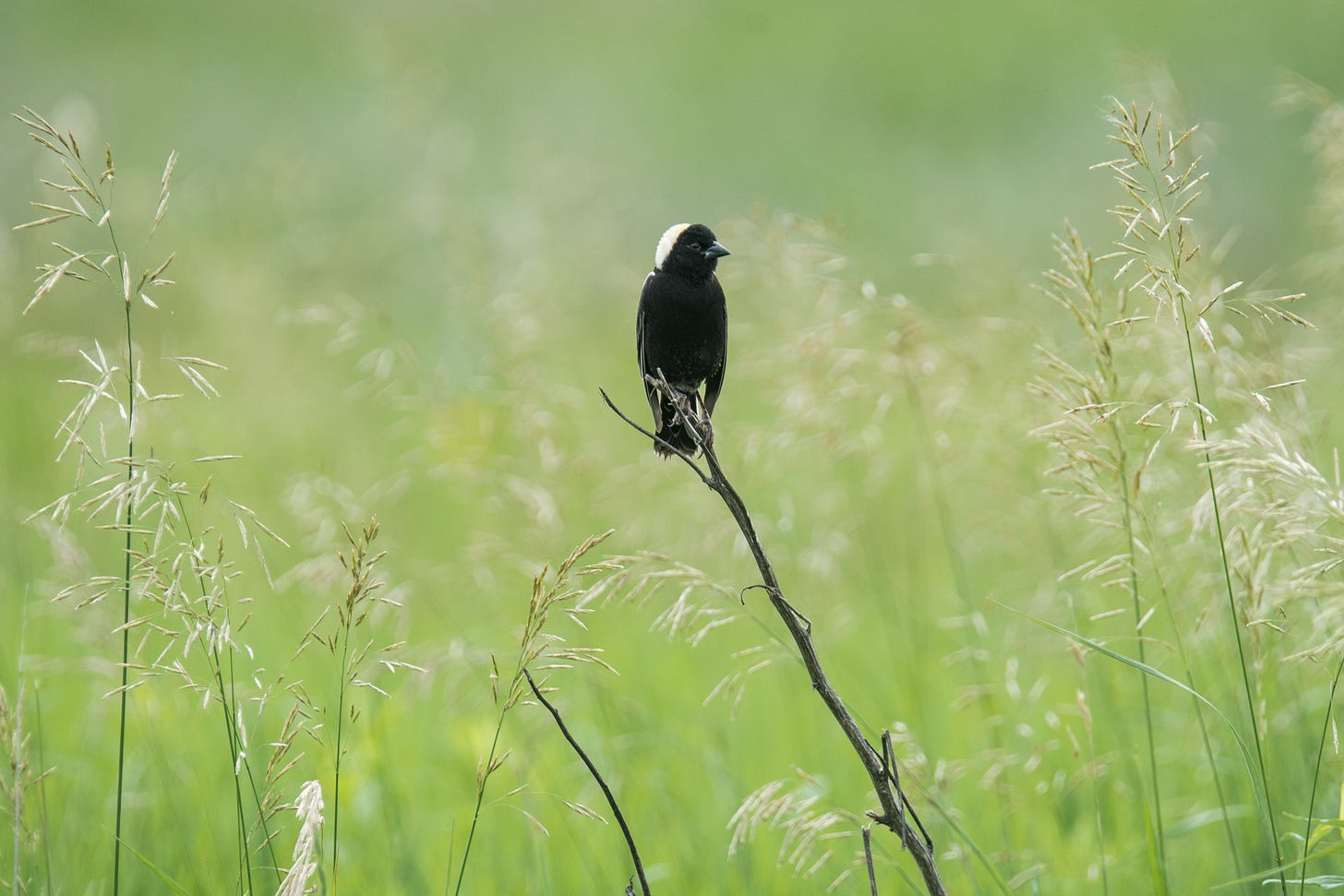
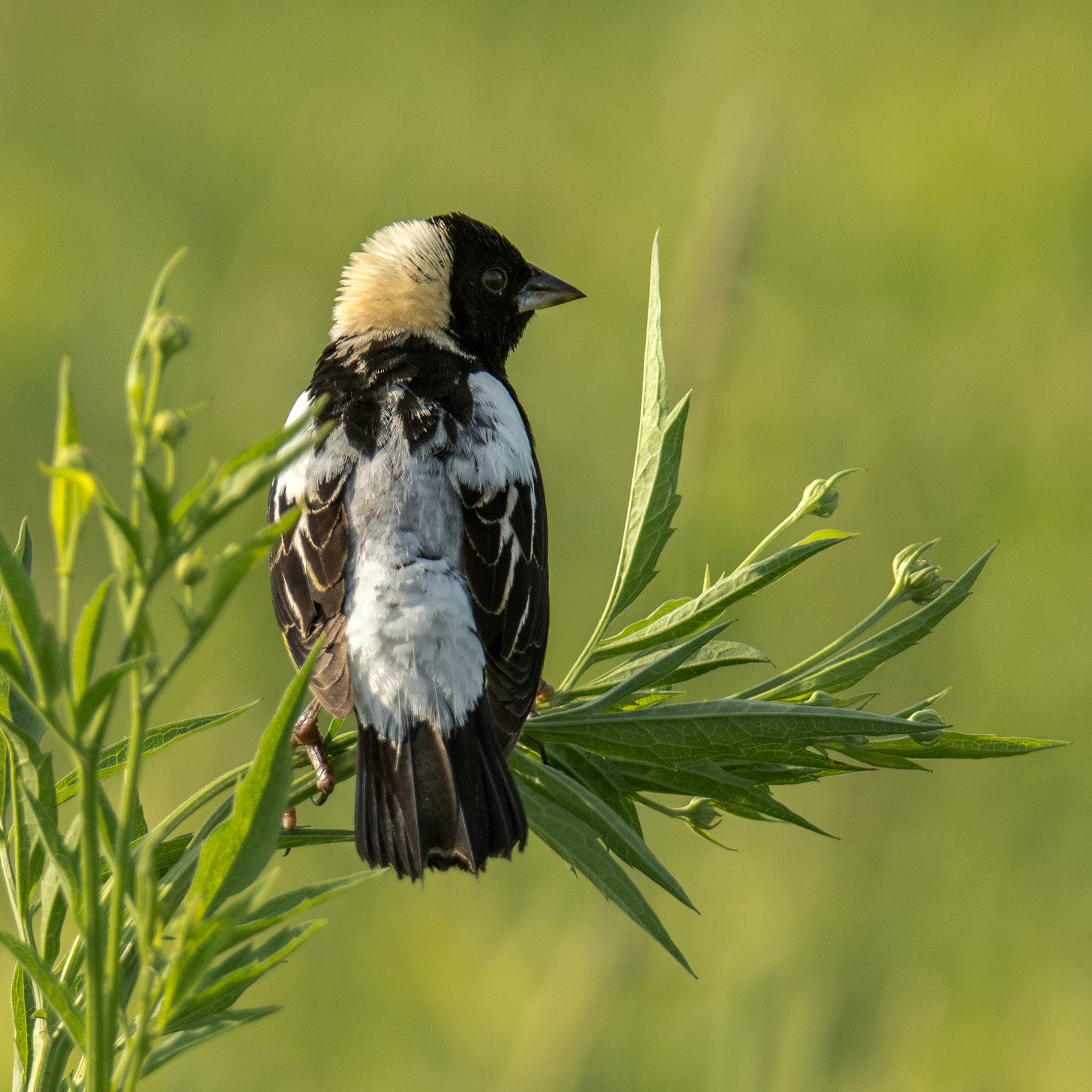
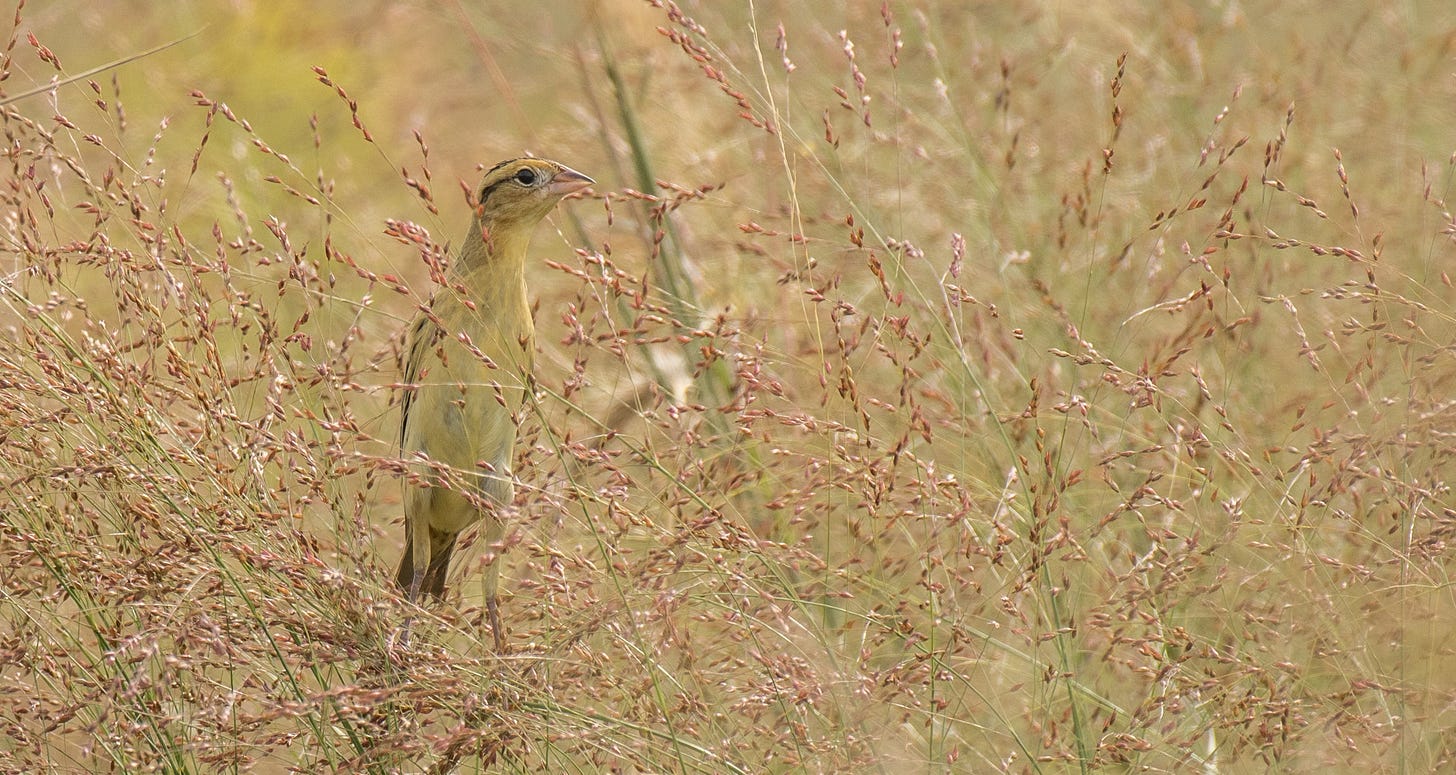
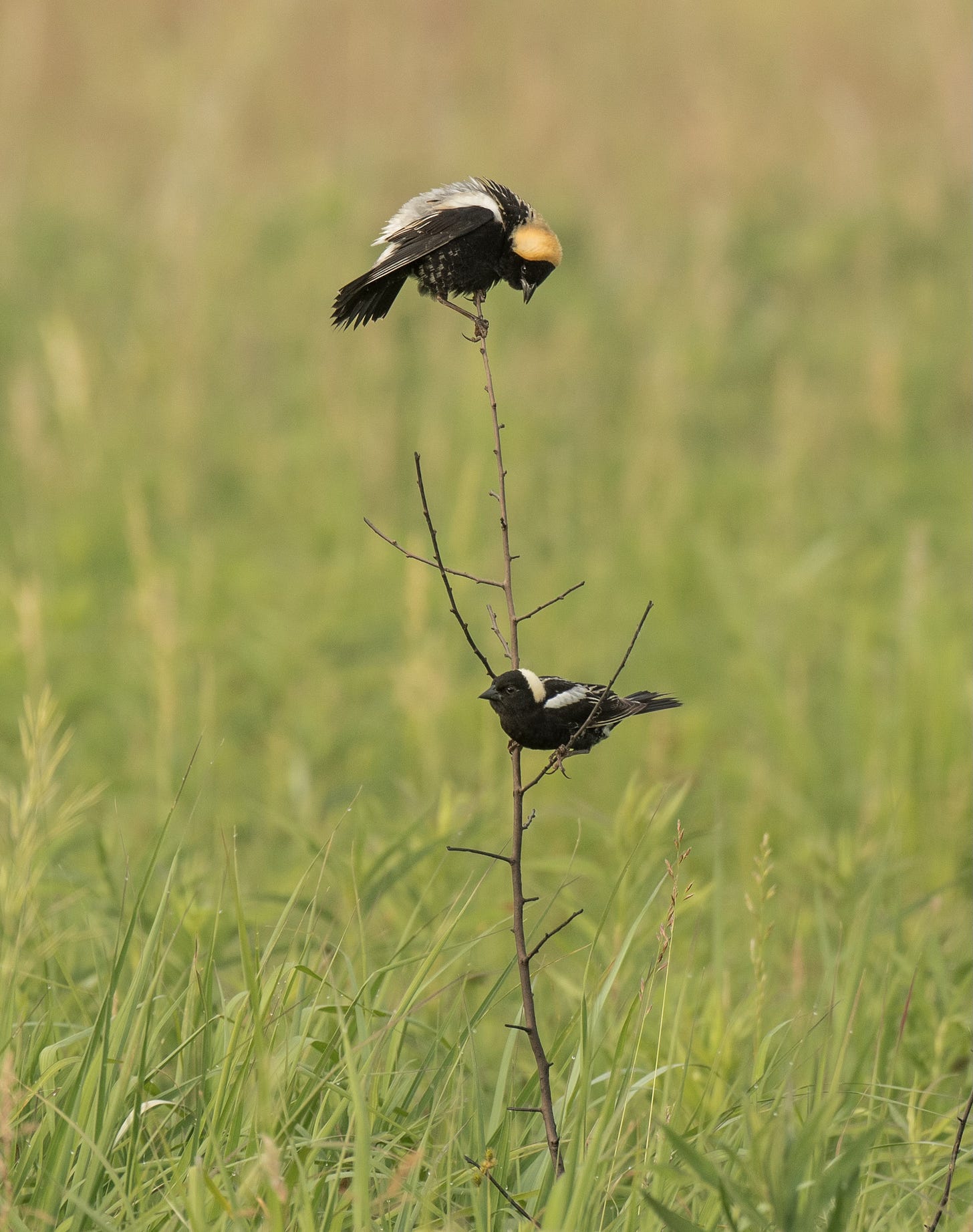


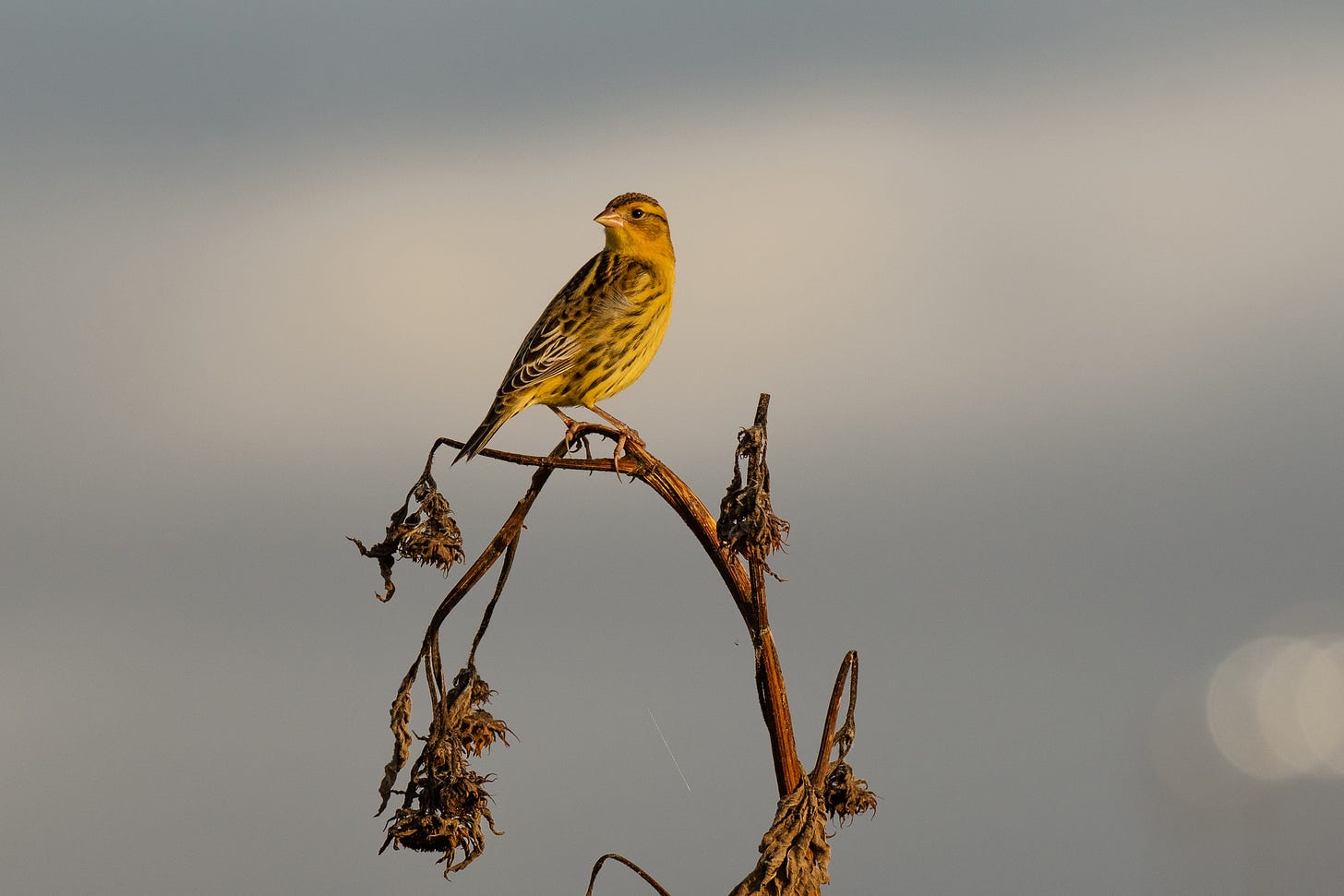
I don’t know, Dan, I think there’s something quite charming about the male’s yellow cap!
Great piece! And great photographs!